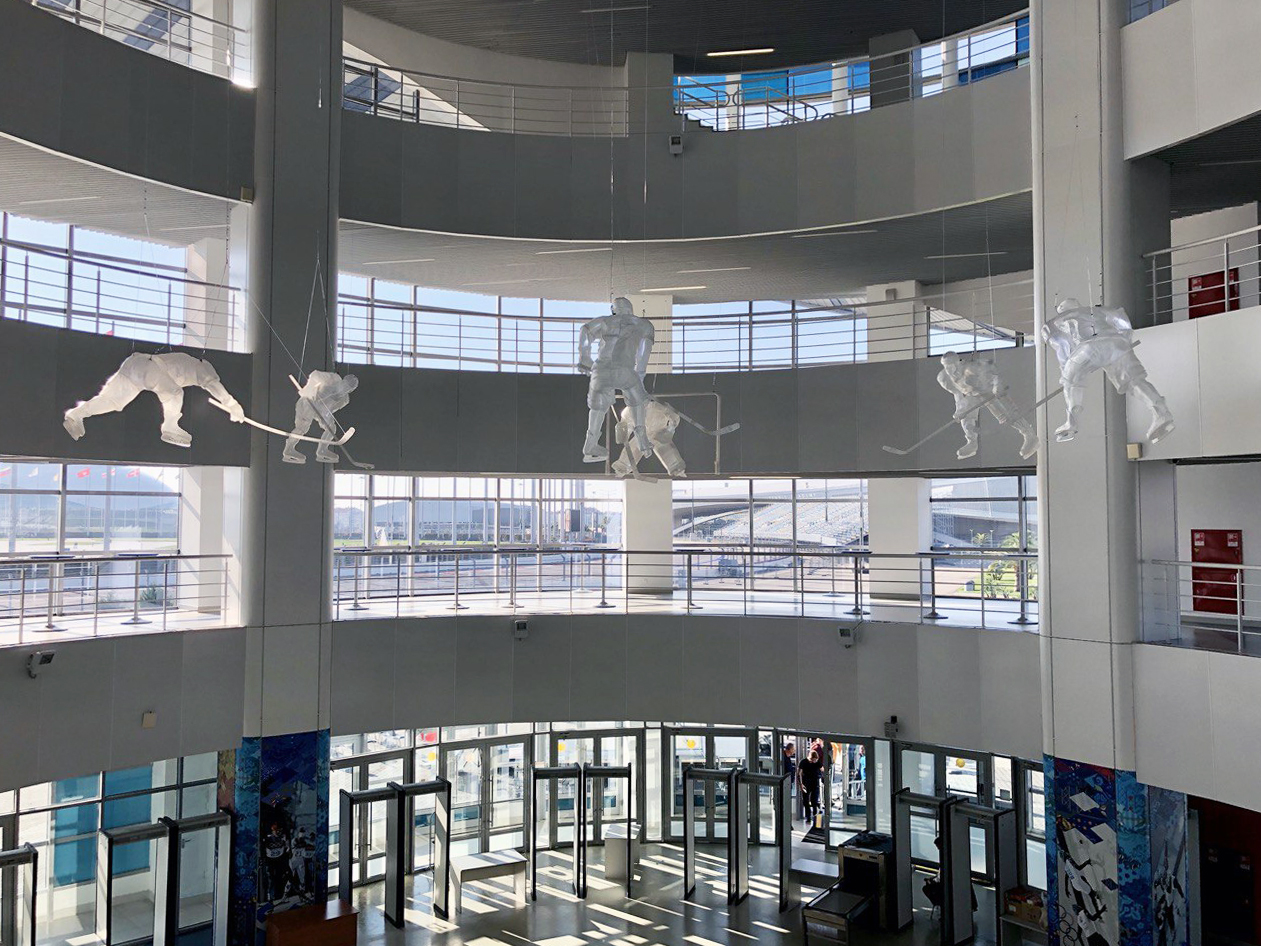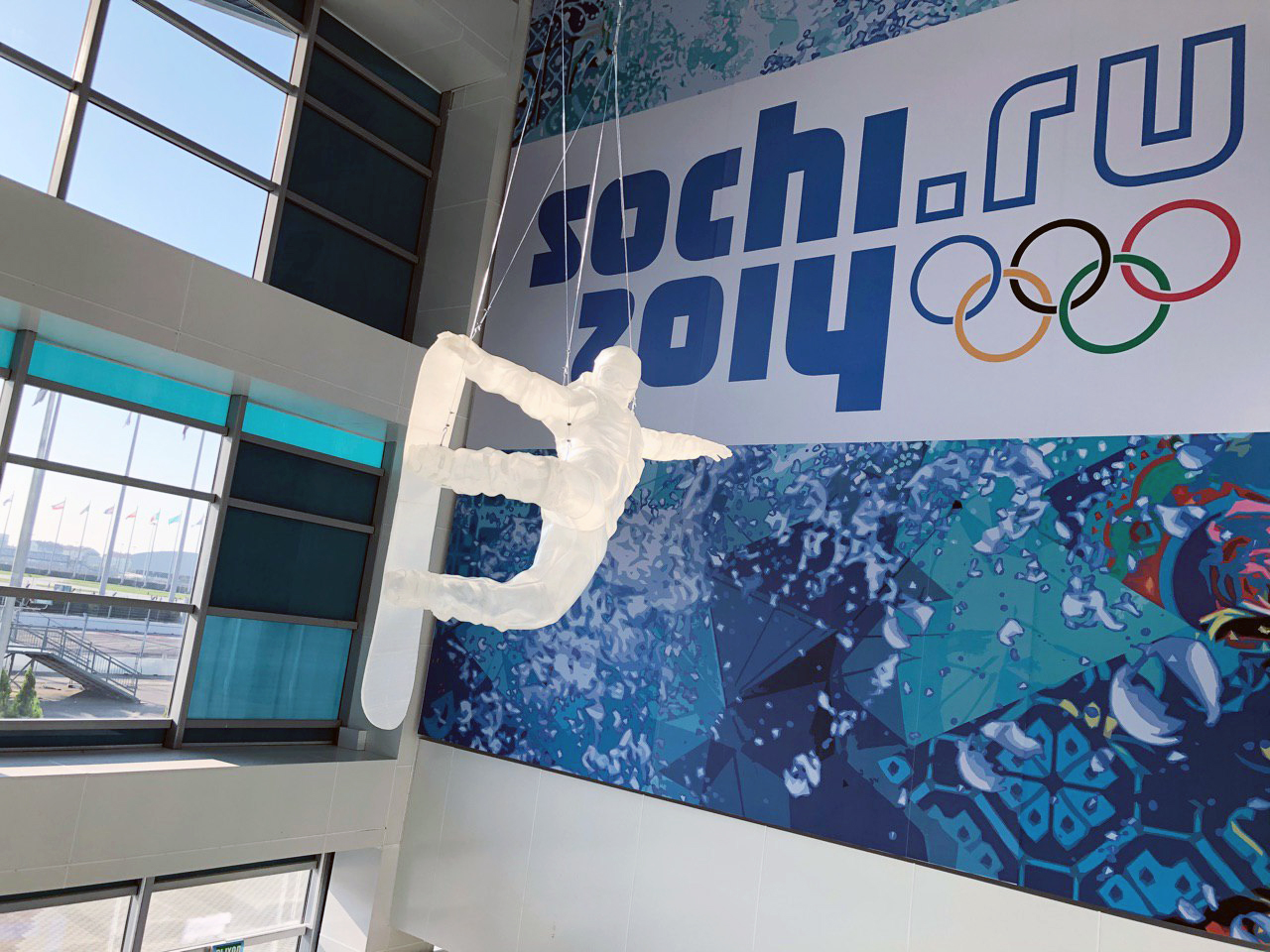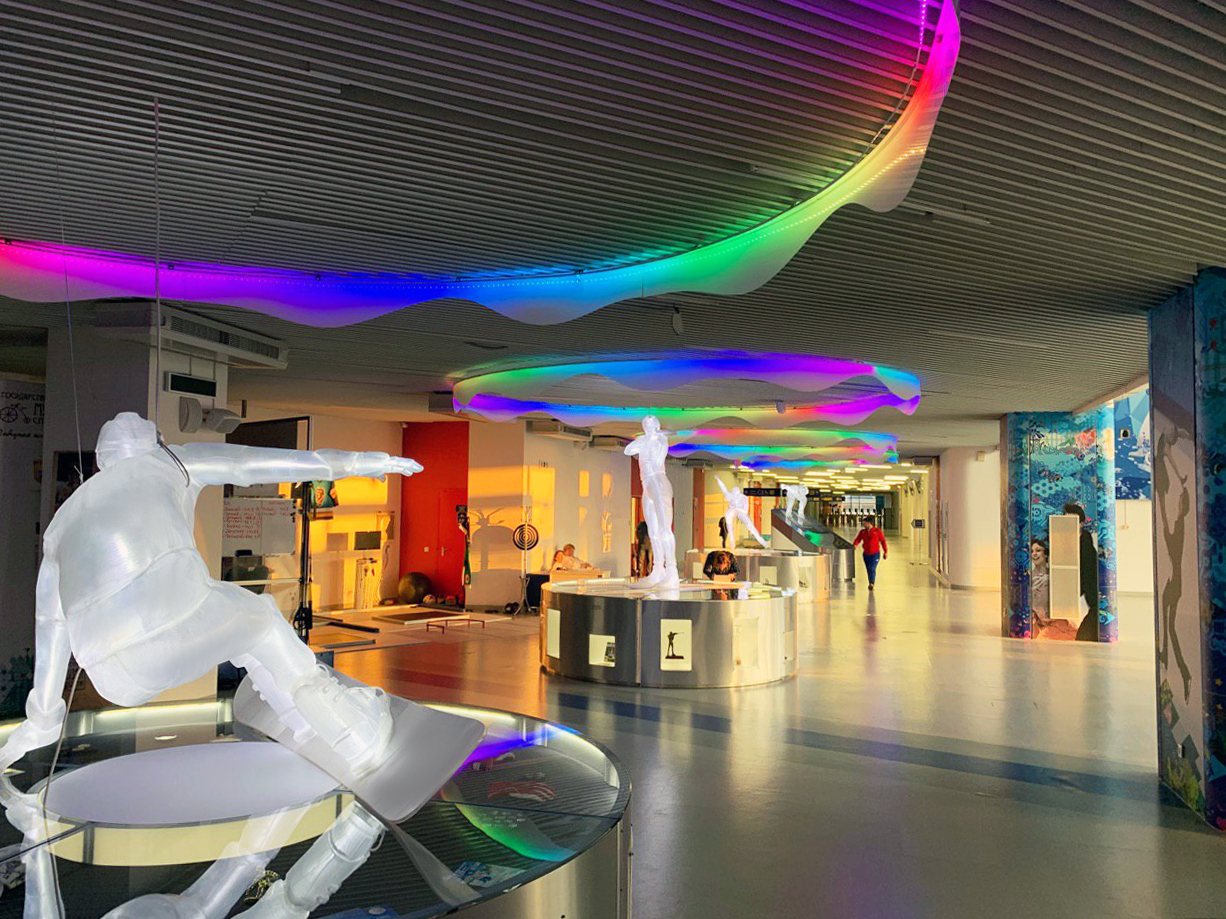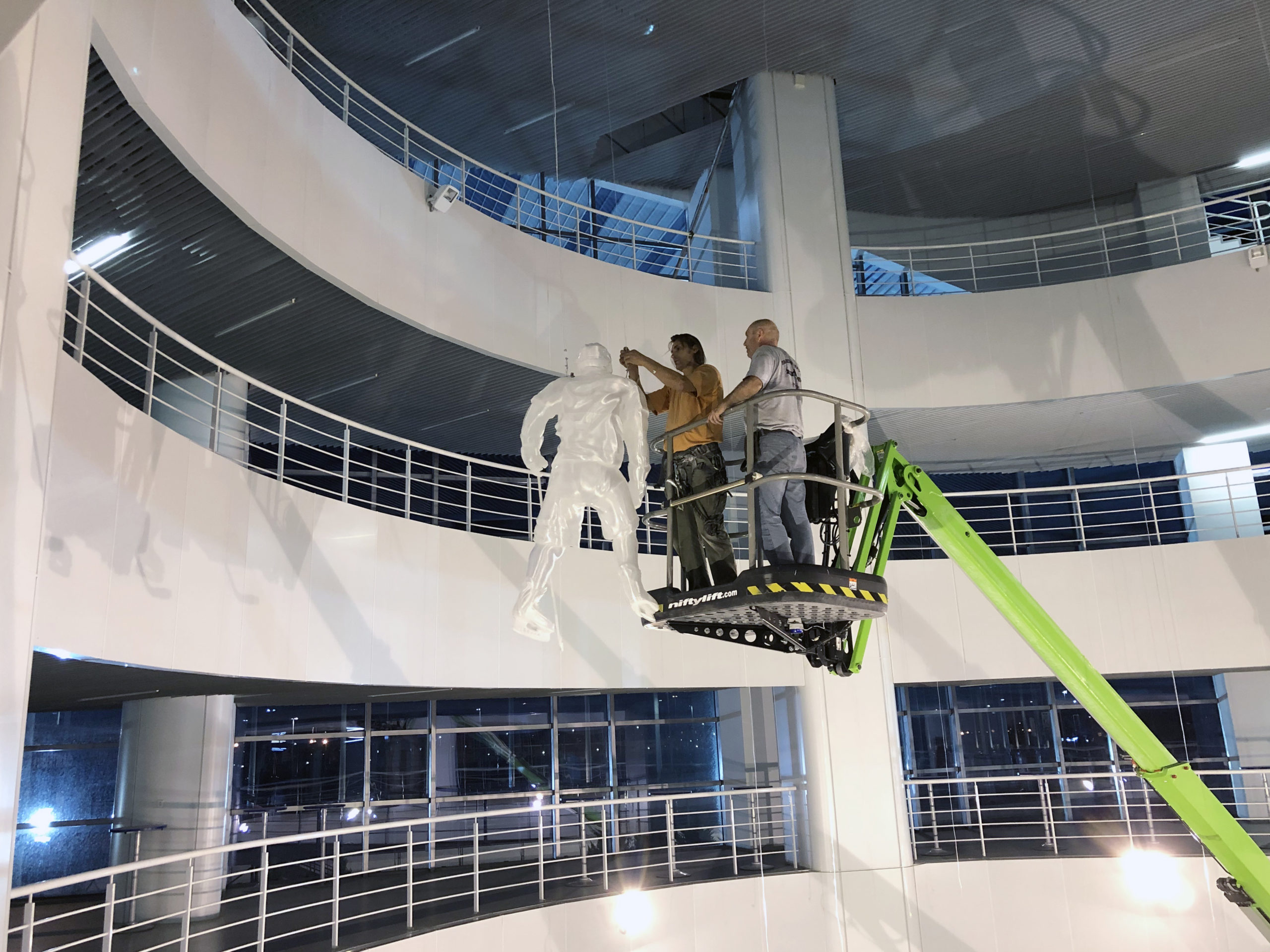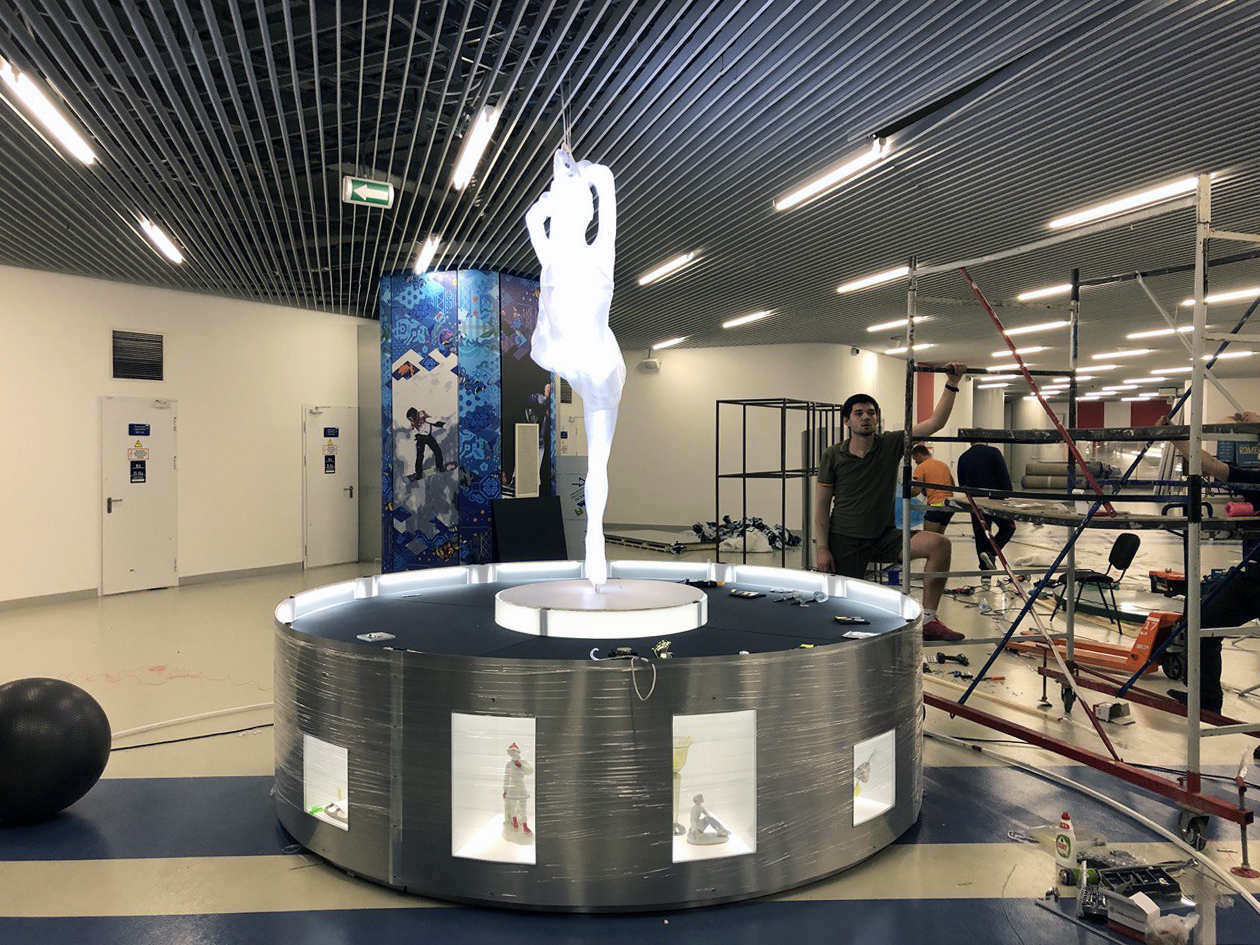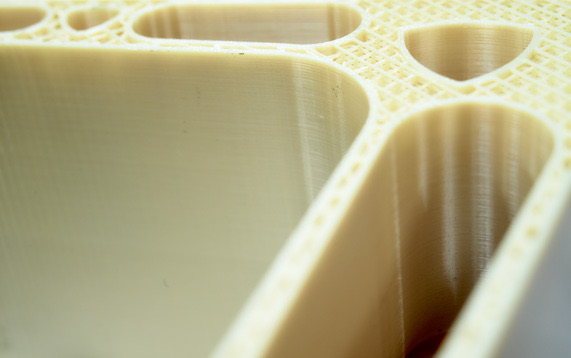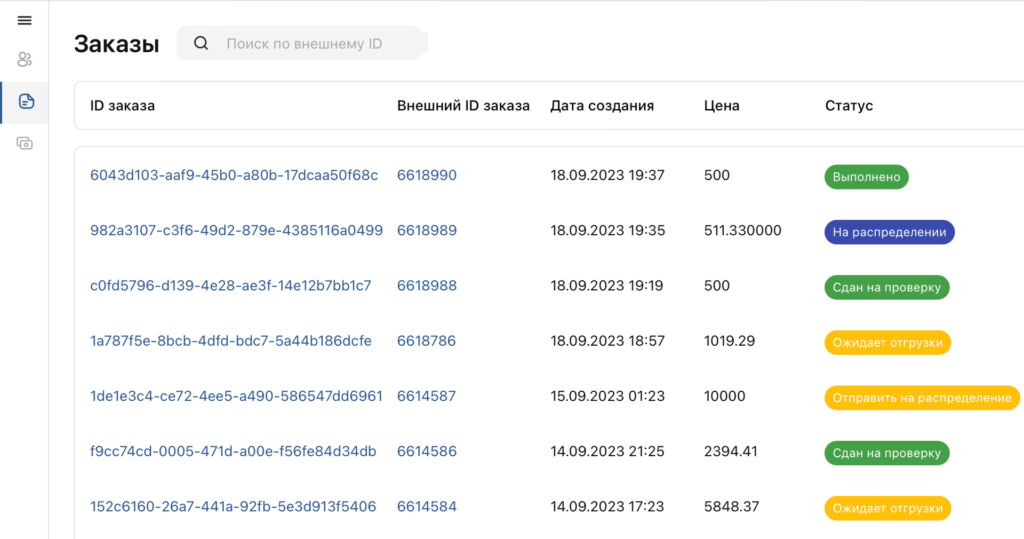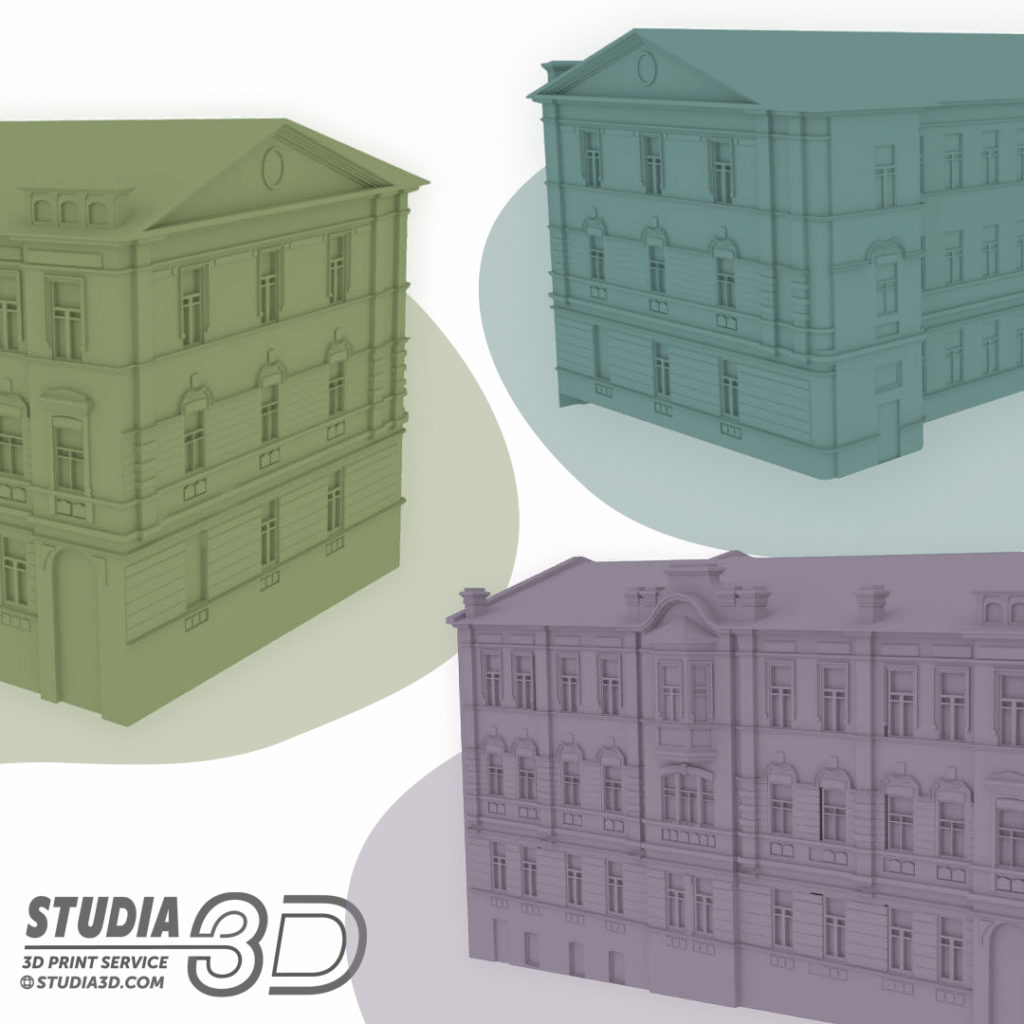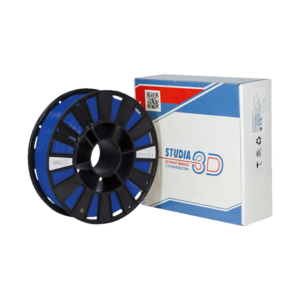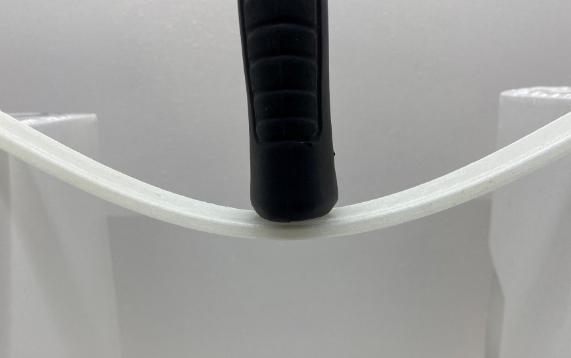

3D printing of the exposition "Winter Olympic Sports"
The FSBI State Museum of Sports initiated the development and production of a large-scale exhibition in honor of the Winter Olympic Games held in Sochi in 2014. This was our biggest project in the past year.
Project of the Year
The exposition is represented by 17 luminous figures in sports such as biathlon, snowboarding, figure skating, curling, skiing and hockey.
The figures were made byStudia3D» on 3D equipment using FDM technology (fused deposition modeling). Large-scale 3D printing involves breaking down the original model into parts, which are soldered into a single whole after printing - on average, 1-30 parts per 40 figure.
For the development of models, the best specialists from the State Sports Museum and the Center for Additive Technologies were involved.Studia3D". Modeling of athletes was carried out on the basis of real people - active athletes of the Russian Federation were invited, literary and digital materials were used, which made it possible to bring human figures as close as possible to reality.
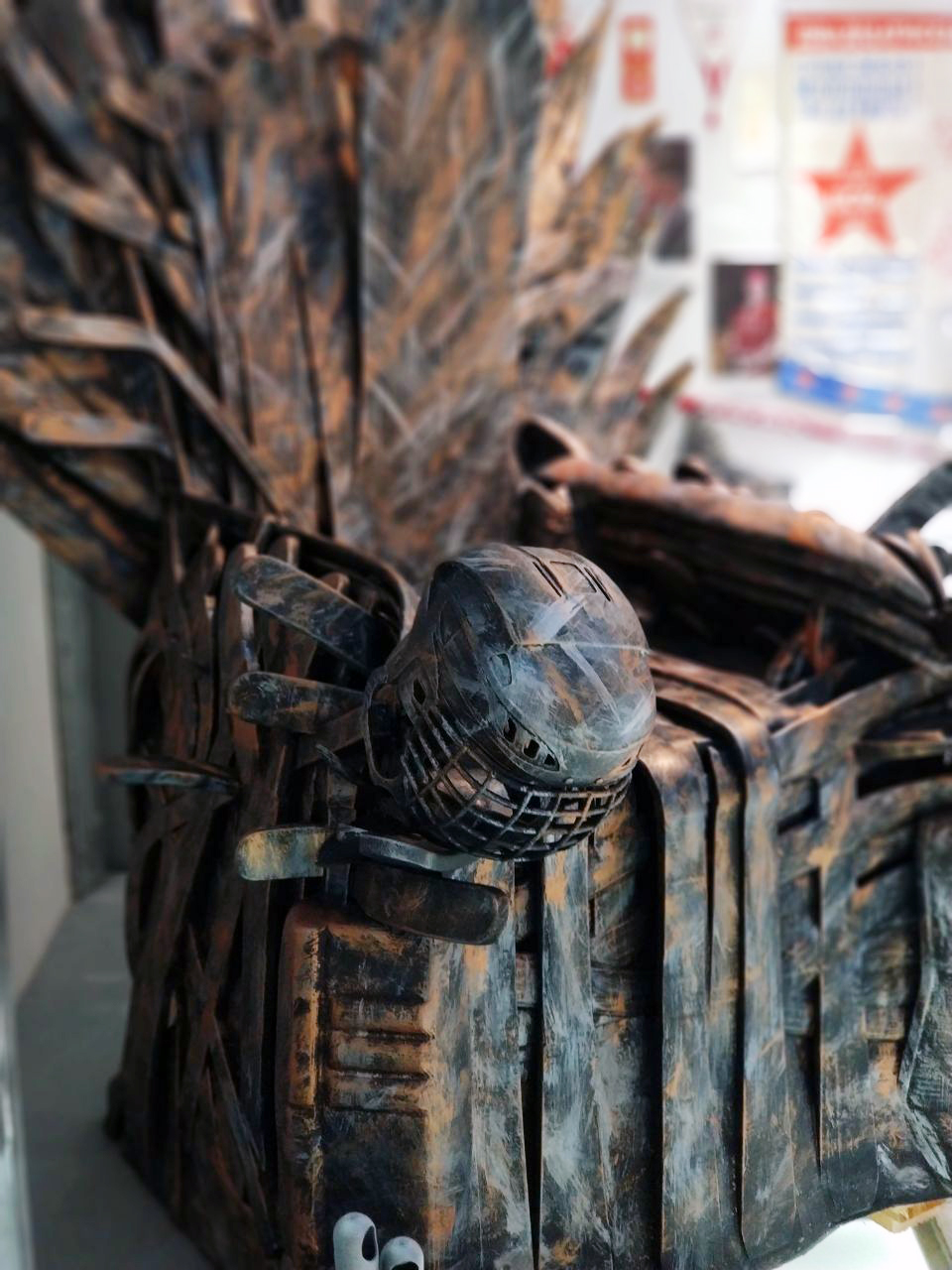
Watch a video about the project.

Live projection
Creation of a program that allows you to change the volume of shapes when changing the position of the body. Our past work came in handy just in time!

Material selection
SBS (styrene-butadiene-styrene) plastic of Russian production was used as a material of manufacture.
Material capabilities
This choice of material was due to its light transmittance, as well as the possibility of obtaining a finish coating resembling an ice crust - the main requirement of the customer.
Material Features
We had to curb a rather capricious plastic in the work: difficult corners and connecting sections gave cracks, so corrections were made to the printed codes
Making figures.
Work stages
-
Realistic models
With different body positions in a person, certain muscle groups are involved, and, subject to the anatomical alphabet, you can achieve the most natural appearance of an athlete.
Fortunately, we have already faced a similar modeling task, which significantly saved the time allotted for modeling.
-
Smart 3D printing
In the course of work, the engineers of the center “Studia3D» had to solve a number of difficulties:
- for greater light transmission, a 2 mm thick wall was chosen, which increased the possibility of deformation of the model.
- it was also necessary to “hide” the seams from the collection of models, so at the initial stage, the division of the figures took place in the connecting sections - folds, body bends, intersections of clothes and shoes.
-
Icy post-processing
After printing, the figures were sent to the post-processing workshop, where they were collected and processed with xylene - this was necessary to compact the figures and give them a glossy effect.

-
Backlight selection
After several negotiations with specialists, as well as tests for suitable light color and power, it was decided to choose light structures to be placed inside the figures.
To mount the LEDs, tripods were separately printed and inserted into the figures at a specific angle to distribute the light evenly. On average, a figure contains from 20 to 30 LEDs, the brightness of which is determined by the regulator.
The exposition included not only figures, but also decorative modules imitating the northern lights, which is why the process of choosing light structures was long and painstaking.


Fastest large-scale 3D printing
The project involved 30 Picaso XL 3D printers and about 340 kg of plastic. The printing of one figure took 2,5-3 days, but the project was completed in a month - this became possible thanks to parallel processes: while some figures were being printed, others were assembled, prepared for printing or post-processing.
More about large-size printing

Technological novelty
During the execution of the order, we had to face and solve a couple of technological difficulties, including the selection of material, printing modes, and making the models realistic.
We had to go through dozens of types of light structures in order to achieve perfectly distributed light, and, on top of that, we provided the client with the ability to adjust the brightness of the light himself.
Team Studia3D successfully coped with the transportation of figures for 1700 km and their installations. For the long-term operation of objects, we carried out load tests for suspended figures in order to most correctly mark the attachment points for suspension.
We have thought of everything. And so it will be with every project.

Everything became possible thanks to a close-knit team
A whole month a team of specialists Studia3D worked on this truly amazing and challenging project.
Modelers, engineers, electrical engineers, 3D printer operators, and post-processing shop employees were constantly in production and handing over work to each other, minimizing downtime.
The project manager and the logistics department monitored the ongoing processes on a daily basis and provided the staff with both material and information resources.
The administration of the company kept in touch with the customer, informed about the progress of work and broadcast his wishes to the production.
At all stages of the work, the marketer was watching the project, collecting the necessary materials to highlight this project to the community of amateurs of additive technologies and to you, dear readers.
This project, first of all, showed us its capabilities, and also dispelled hundreds of myths about the limitations of XNUMXD printing. We are glad that we were able to make such a contribution to the development of the industry.


